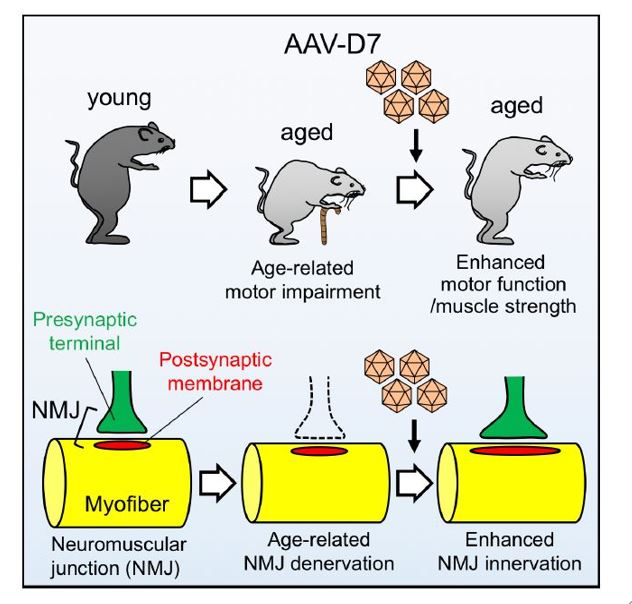A new treatment concept for age-related decline in motor function
―Enhancement of motor function and muscle strength in aged mice by enhancing formation of neuromuscular junctions―
A new treatment concept for age-related decline in motor function
―Enhancement of motor function and muscle strength in aged mice by enhancing formation of neuromuscular junctions―
iScience on August 5, 2020. DOI: 10.1016/j.isci.2020.101385
In an aging society, one of the most important and urgent tasks of scientific research is to counteract the decline in motor function and muscle weakness that accompanies the aging process.
A research group led by Professor Yuji Yamanashi of the Institute of Medical Science, the University of Tokyo, conducted experiments using aged mice to demonstrate that muscle denervation at the neuromuscular junction (NMJ, *1) could be appreciably offset by an NMJ formation-enhancing treatment that strengthened the motor function and muscle of aged mice.
The results of this study suggest that NMJ formation-enhancing treatment may be effective to overcome motor impairment and muscle weakness associated with human aging.
The results of this research were published in "iScience" on August 5, 2020.
A research group led by Professor Yuji Yamanashi of the Institute of Medical Science, the University of Tokyo, conducted experiments using aged mice to demonstrate that muscle denervation at the neuromuscular junction (NMJ, *1) could be appreciably offset by an NMJ formation-enhancing treatment that strengthened the motor function and muscle of aged mice.
The results of this study suggest that NMJ formation-enhancing treatment may be effective to overcome motor impairment and muscle weakness associated with human aging.
The results of this research were published in "iScience" on August 5, 2020.

The therapeutic administration of AAV-D7, a viral vector carrying the human DOK7 gene, enhances NMJ formation and innervation together with motor function and muscle strength in aged mice (≥2 years old).
